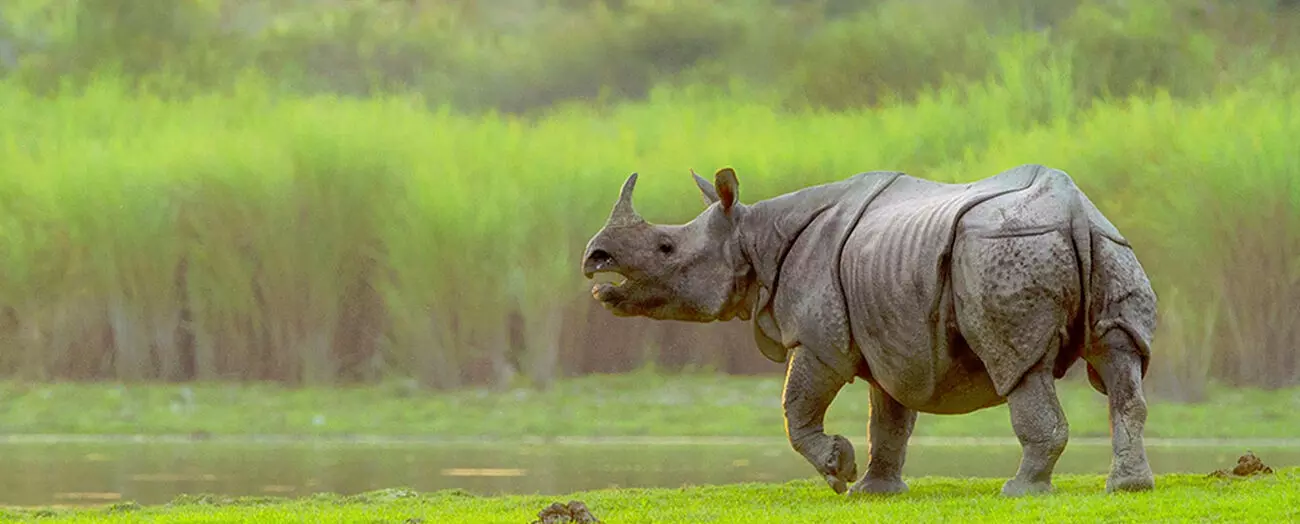One-horned rhinoceros to tigers: Assam’s Kaziranga National Park re-opened for visitors
The park is a prime destination for wildlife enthusiasts, nature photographers, and tourists worldwide
By Sri Lakshmi Muttevi
Assam: If you haven't seen an Indian one-horned rhinoceros anywhere in India, visit Assam. As the new tourism season starts, Kaziranga National Park & Tiger Reserve was officially re-opened for visitors.
Kaziranga, known for its diverse ecosystem and the famous one-horned rhinoceros, closes annually around May due to the monsoon season. The park is a prime destination for wildlife enthusiasts, nature photographers, and tourists worldwide.
The opening ceremony occurred at the Western Range, Bagori, and was attended by distinguished guests, including local MPs and state ministers.
Kaziranga National Park’s 430 square kilometer area sprinkled with elephant-grass meadows, swampy lagoons, and dense forests is home to more than 2200 Indian one-horned rhinoceros, approximately 2/3rd of their total world population.
A unique wildlife-themed ECO SHOP with over 50 products and souvenir items was also inaugurated at the Bagori Range campus. The sale and proceeds from this unique and one of its kind Eco Shop will support the forest staff welfare society and the Eco development committee around Kaziranga.
Additionally, a medicinal plants sale counter was launched at Memorial Park, Kohora, under the Golaghat Social Forestry Division, contributing to a more inclusive identity for forest eco-tourism.
Wildlife enthusiasts and tourists can now look forward to witnessing the park’s iconic wildlife, including the endangered one-horned rhinoceros, tigers, elephants, and a variety of bird species. New activities such as hiking, trekking, and bird trails will enhance the visitor experience, allowing deeper engagement with the park's natural wonders.
It may be recalled that due to the recent floods, and rise in water levels, more than 26 percent of the 233 forest camps were impacted. The inundation of the wildlife habitat has resulted in the migration of animals, crossing the National Highway-715 towards the southern direction in East Karbi Anglong district in search of higher altitudes.
On this occasion, Indian Oil Corporation Ltd. presented an Animal Rescue Vehicle to support the park's ongoing efforts in wildlife rescue and rehabilitation. Adding to the significance of the day, a book titled “A Practitioners Guide to Photographic Monitoring of Asian Elephants for Science and Conservation”, authored by Dr. Varun Goswami, Dr. Divya Vasudev, and Parvathi K Prasad was launched, providing valuable insights into the park’s rich biodiversity and conservation journey.
History:
In the year 1985, the park was declared a World Heritage Site by UNESCO. It is said when Mary Curzon, the wife of the Viceroy of India – Lord Curzon of Kedleston, visited the park to see an Indian one-horned rhinoceros; she wasn’t able to find even one. Then she persuaded her husband to take urgent measures to protect the dwindling species which he did by initiating planning for their protection.
Along with the iconic Greater one-horned rhinoceros, the park is the breeding ground of elephants, wild water buffalo, and swamp deer. Over time, the tiger population has also increased in Kaziranga, and that’s the reason why Kaziranga was declared a Tiger Reserve in 2006.